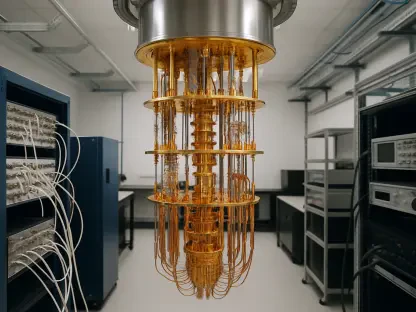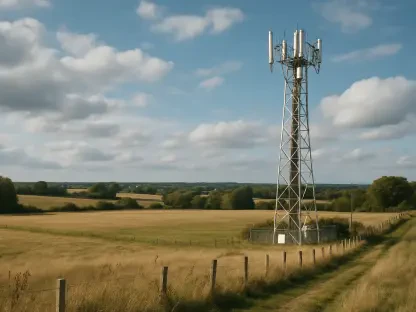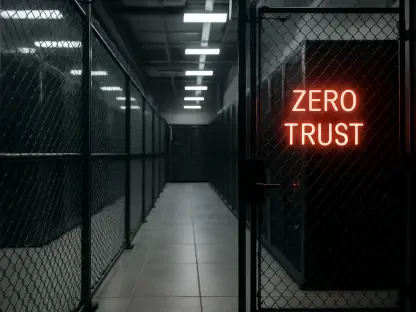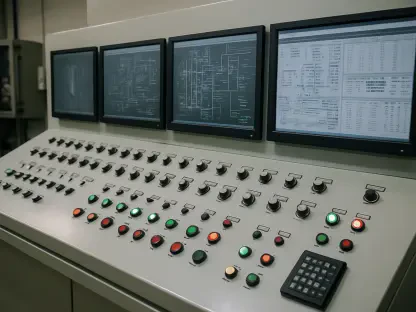The financial performance of Cisco in the second quarter of 2025 has turned quite a few heads, especially with the notable surge in demand for their AI infrastructure and enterprise networking solutions. According to reports, Cisco has logged $700 million in AI infrastructure orders up to this point in the year. With projections indicating that these numbers could surpass $1 billion by the end of fiscal year 2025, much of this growth stems from early enterprise investments in AI-driven infrastructure. This increase in demand from webscale customers underscores a burgeoning trend in the tech industry: companies are gearing up for the intensive network capacity requirements that artificial intelligence will soon necessitate.
Cisco’s CEO, Chuck Robbins, has emphasized the strategic preparation companies are undertaking as they anticipate the impending wave of AI demands. Key among these preparations is the deployment of Cisco’s innovative products, such as the Cisco 9300 Smart Switch family designed specifically for secure AI development, and AI Defense, which is focused on protecting AI projects. These advancements highlight Cisco’s commitment to supporting AI infrastructure. Additionally, the introduction of AI Pods with UCS rack servers, Hypershield security fabric, and the Nexus HyperFabric AI cluster exemplifies Cisco’s drive to stay ahead in the evolving landscape of AI technology.
Cisco’s Strategic Approach to AI Infrastructure
Cisco’s strategy to capture the AI market is multifaceted, encompassing three main areas: AI training infrastructure, AI inference and enterprise clouds, and AI network connectivity. For AI training, major webscalers are employing Cisco 8K and Silicon One technologies. These technologies are designed to handle the massive data loads and computational requirements of AI training processes. The implementation of these solutions aligns with Cisco’s aim to become a cornerstone in the foundational stages of AI development.
Moving to AI inference and enterprise clouds, products like the Nexus switches and Nvidia-based AI servers are pivotal. These products simplify the deployment of AI infrastructure by integrating cutting-edge technology with existing frameworks. This not only facilitates smoother operations but also reduces the time and cost involved in setting up AI systems. Cisco’s strategy ensures that the barriers to AI adoption are minimized, thereby expanding its market reach.
Beyond training and inference, AI network connectivity forms the backbone of deploying AI applications effectively. Cisco’s comprehensive platforms spanning switching, routing, security, and observability prepare networks to accommodate AI’s rigorous demands. This holistic approach ensures that any AI-driven application can perform optimally without compromising on network integrity or performance. By bolstering various aspects of network infrastructure, Cisco stands ready to meet the complex needs of modern AI applications.
Growth in Core Enterprise Networking
Beyond AI, Cisco’s core enterprise networking segment has seen remarkable growth, with orders for networking products experiencing double-digit increases. This surge encompasses various areas, including campus switching, enterprise routing, webscale infrastructure, and IoT applications. The resurgence of return-to-office policies has significantly boosted the demand for campus switching and next-generation WiFi 7 access points. These trends suggest a robust market therein, bolstered by Cisco’s ongoing innovation and strategic positioning.
Data center switching is another area where Cisco has excelled. The company reported double-digit growth in this segment for the fourth consecutive quarter, indicating sustained high demand. The introduction of the 800G Nexus switches has been met with enthusiasm, reflecting broader market readiness to adopt newer, faster technologies. This consistent performance underscores the ongoing importance of strong data center capabilities in supporting various enterprise operations.
Additionally, Cisco’s Industrial IoT product line has also performed exceptionally well. Orders have grown 40% in the first half of fiscal year 2025, with over 50% growth in the second quarter alone. The increasing incorporation of AI-powered robotics and industrial security solutions has been a significant driver behind these numbers. The impressive growth in these sectors points to a well-rounded approach by Cisco, addressing traditional networking needs while pioneering AI and IoT innovations.
Future Outlook and Industry Trends
Cisco’s financial performance in the second quarter of 2025 has been remarkable, largely driven by a significant uptick in demand for its AI infrastructure and enterprise networking products. Reports reveal that Cisco has secured $700 million in AI infrastructure orders so far this year, with forecasts suggesting this could exceed $1 billion by the end of the fiscal year. Much of this growth is attributed to early investments in AI-powered infrastructure by enterprises. The increasing demand from large-scale web customers highlights a growing trend in the tech sector where businesses are gearing up for the substantial network capacity that artificial intelligence will soon require.
CEO Chuck Robbins has highlighted the strategic moves companies are making in anticipation of the AI surge. Central to these efforts is the adoption of Cisco’s cutting-edge products like the Cisco 9300 Smart Switch family tailored for secure AI development and AI Defense focused on safeguarding AI projects. Cisco’s commitment to AI infrastructure is evident in their innovations, including AI Pods with UCS rack servers, Hypershield security fabric, and the Nexus HyperFabric AI cluster, showcasing their dedication to leading the AI technology landscape.









